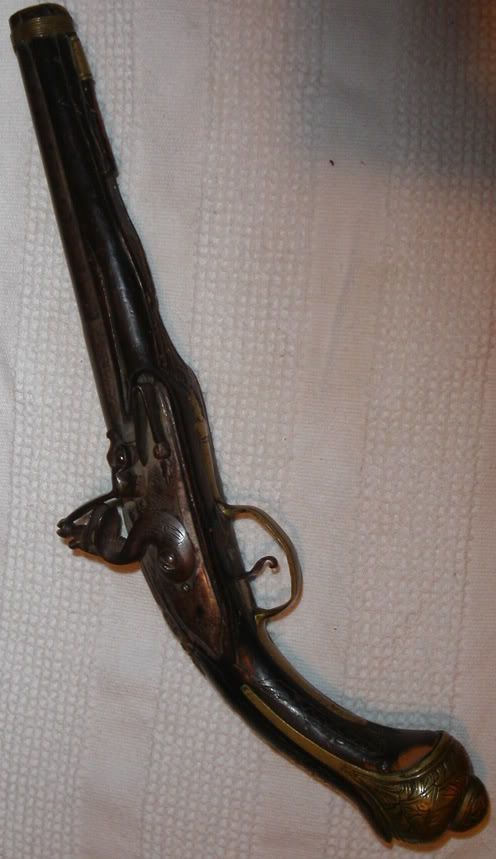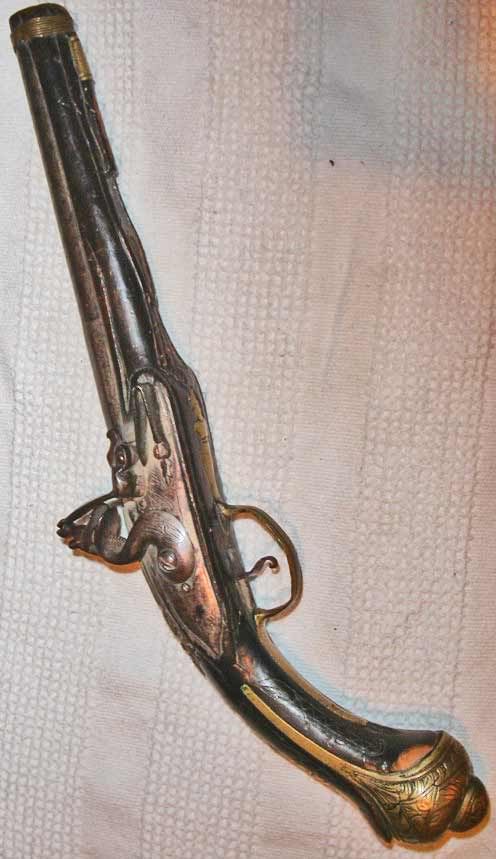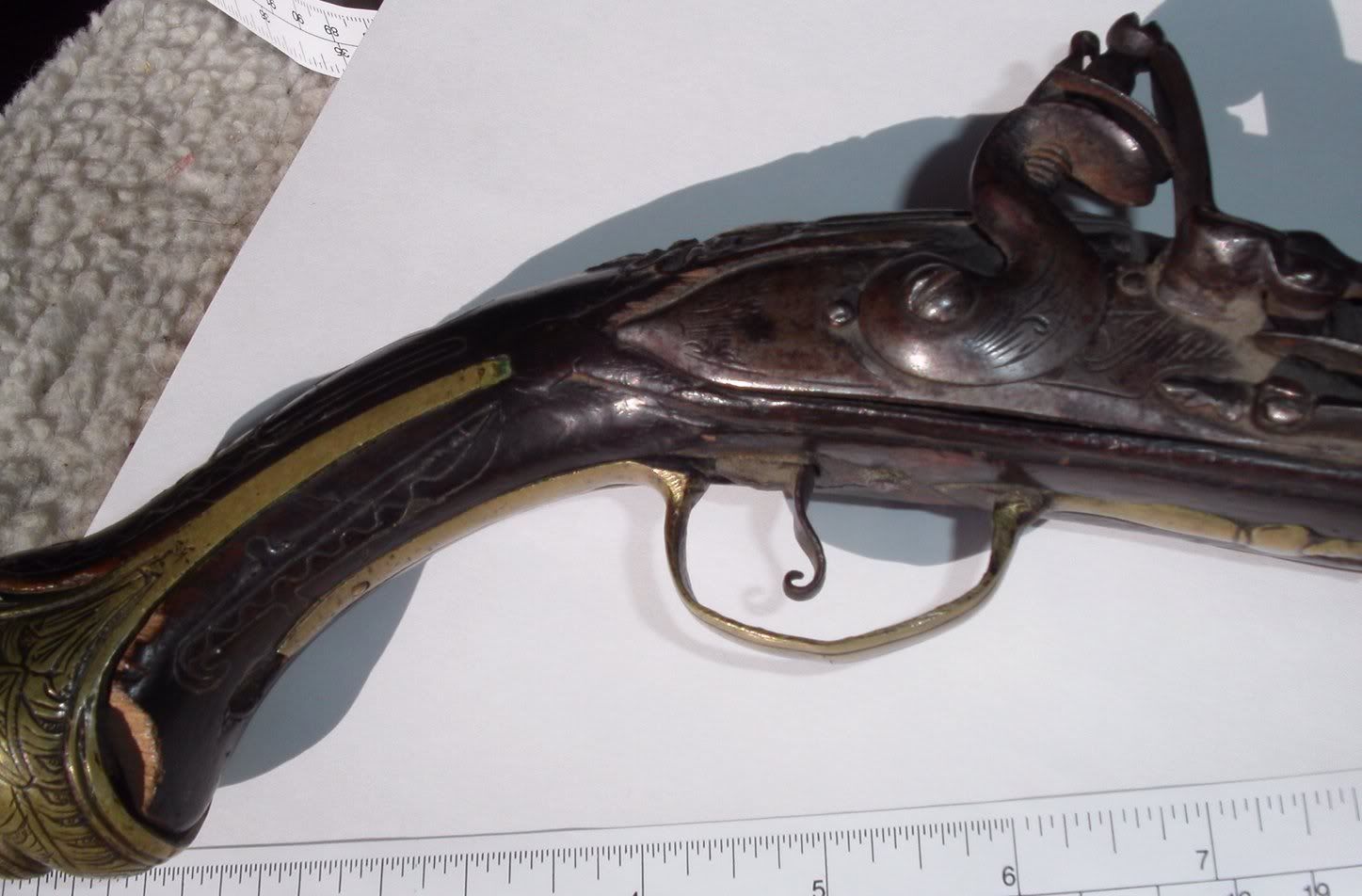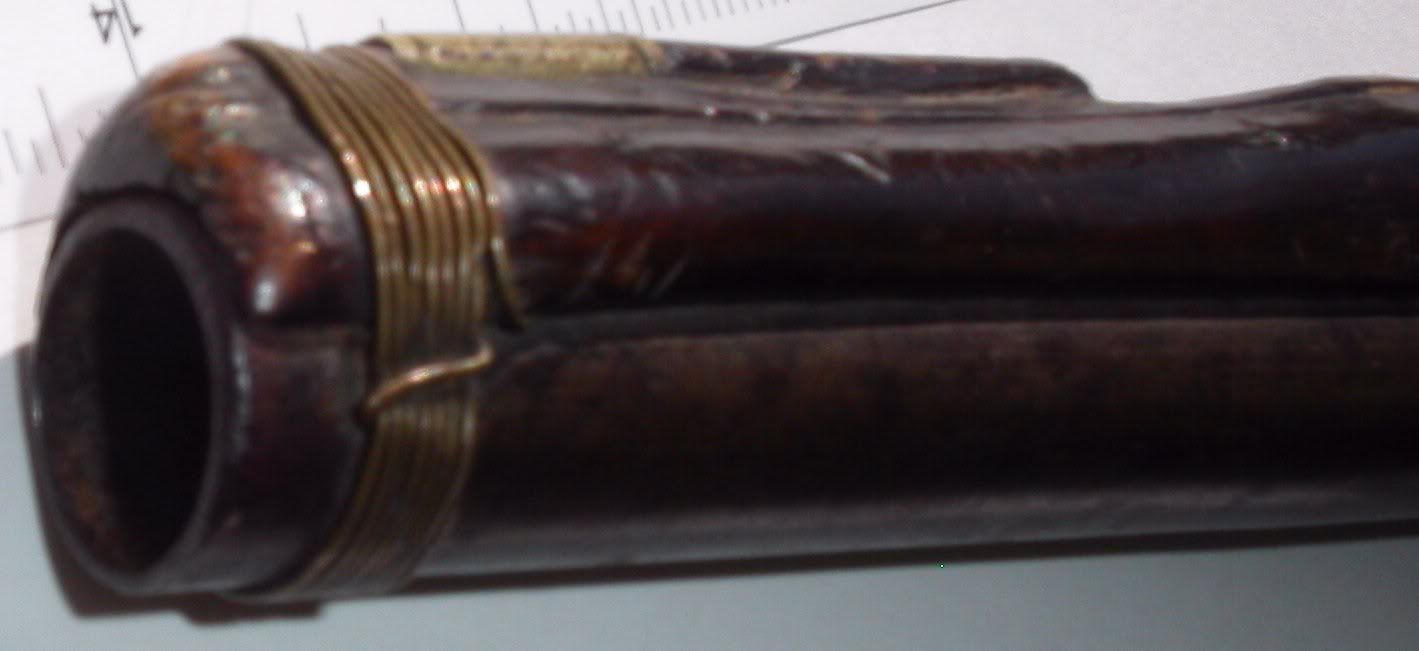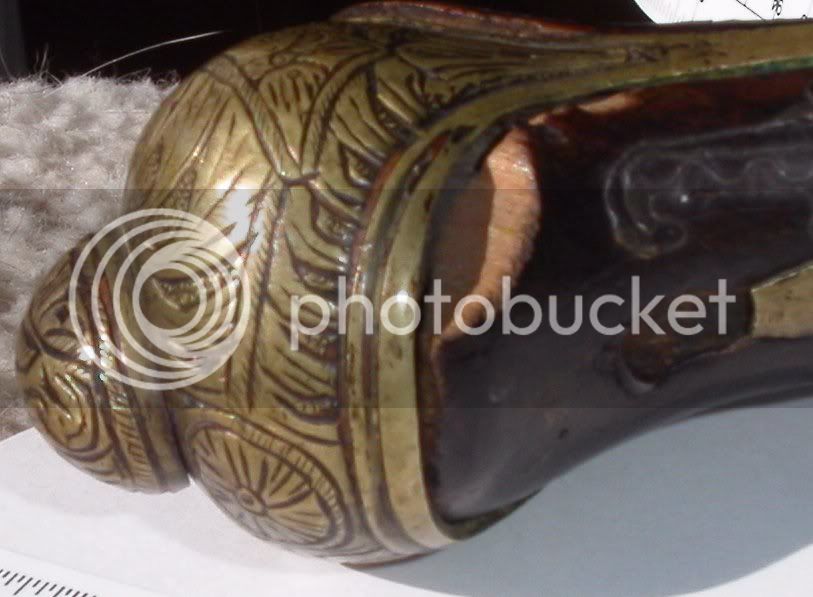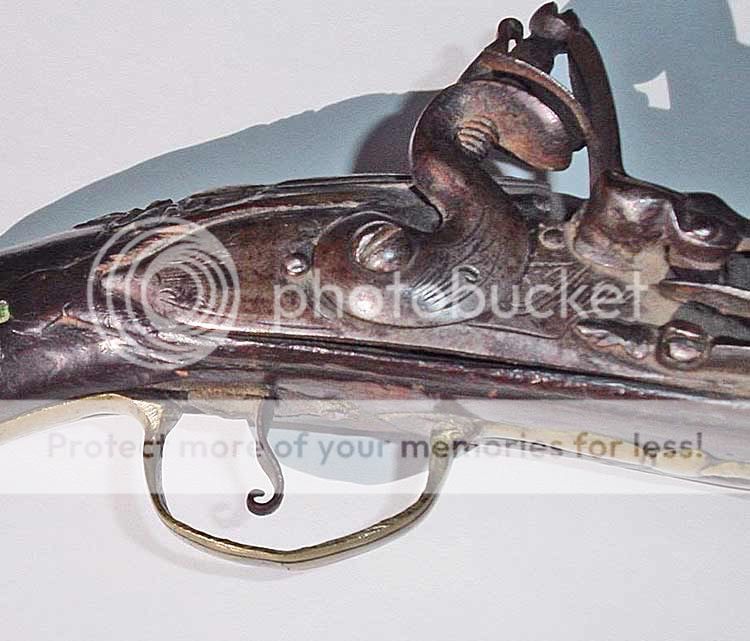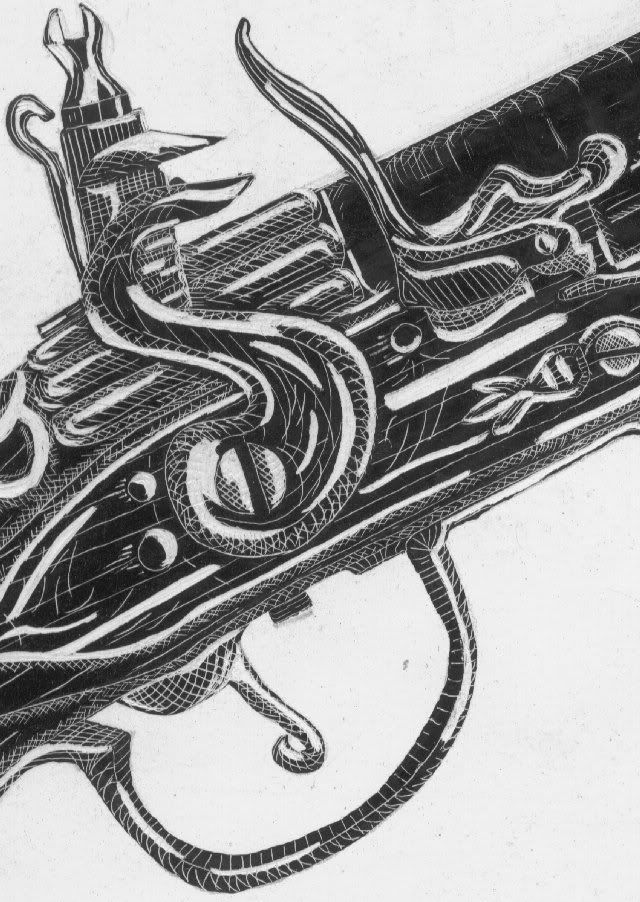Zonie, Yeah, I see where you are coming from. It's just that the gun is in such bad shape. The condition the gun is in is what really makes the value -- unless it can be somehow proven that it is an American made pistol because that would inflate the price. The fact that it's a flinter also adds to the value, but with a gun of that quality it doesn't add that much. My humble experience with ML's only dates back to the early 70's. I have always been able to buy shootable antiques for less money, usually way less money than modern made replicas. I've never been able to understand why, but I also haven't let it bother me, because I like originals over repo's any day. And yes, on occasion I've shot all of them, except a couple of pistols, some more than others, especially when I didn't have a repo to shoot at the time. I had an original Brown Bess a couple of years ago, paid $350 for it, and I was going to repair it and make it a shooter, ended up having it sit around so sold it for $450. It could still be made into a shooter if the guy that bought it wanted to -- so what's a repo Brown Bess bringing today, $850.00 ??? All that said, don't get me wrong, I aint a expert on this stuff, I just keep my eyes and ears open, and most of the antiques I have purchased have been way below the bottom NRA grade, which is the case with this pistol. The price is all in the quality. Please understand I aint trying to argue with you, I've just shared about everything I know on the subject. One more thing, you go to the gun show, and you see these high priced antiques on the tables, and you think Wow, they are worth lots of money, but after you've gone to these shows for several years you notice that the same guns are on the same tables, for the same price waiting for a sucker. There is a guy on the internet (I won't say his name) that has antique cap and ball Colt pistols for sale at horrible prices, $15 to $20 thousand. I don't know if he sells any, but I have an 1861 colt that's almost a hundred percent, it was owned by a Colonel in the Union Army, he must of had a desk job, because there isn't hardly any holster wear. I'm the third owner of the gun, the Colonel's widow sold it to my still alive now 99 year old Uncle, who not long ago gave it to me. OK says I, if I can sell this gun for 15 or 20 grand it's gone. The best offer I got was under -- way under 5. I still have the gun, my kid can sell it when I die. Shucks, what am I trying to say -- the gun is only worth what someone will pay for it. In real life it's not as much as you might think.
